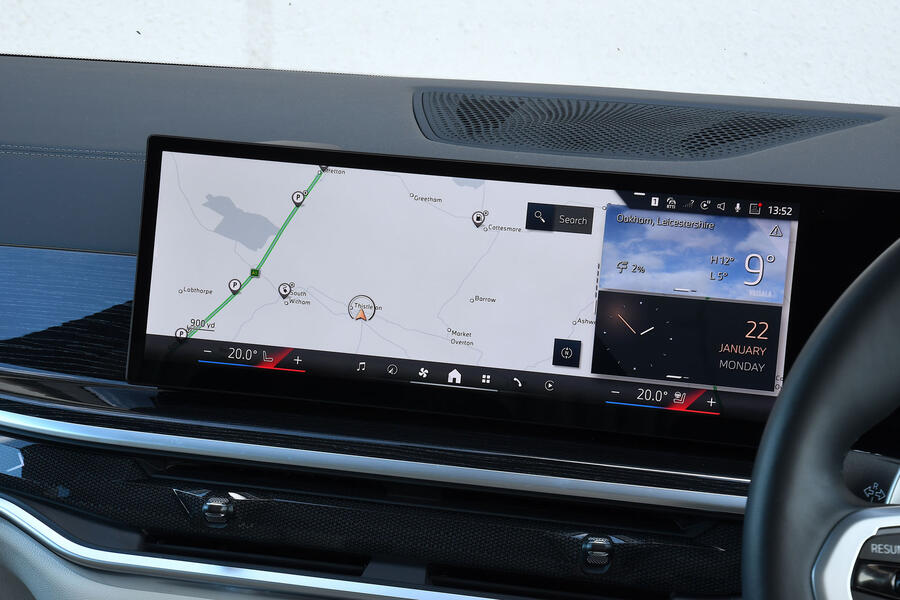Previous generations of the You don’t tower over other cars as much as you do in a Range Rover Sport, but the X5 feels immediately and resolutely like an SUV.
When we first road tested the G05 finish and its imaginatively shaped features.
That remains largely, if not all, true for the facelifted cars, which get an extensively redesigned dashboard that certainly looks fresh and more modern, but takes a noticeable step back in perceived quality and usability. The old streamlined instrument cluster and multimedia screen annex have been replaced by a large curved display on top of the dashboard. It consists of a 12.3-inch driver display and a 14.9-inch multimedia screen and has simultaneously swallowed the row of physical climate control buttons. The set of configurable keyboard shortcuts is also gone.
There are other signs of cheapening: the redesigned air vents feel less substantial, the crystal gear lever has been replaced by a plastic-feeling switch, and a strip of clear plastic now runs across the dashboard. This is still a convincing luxury car cabin, but one that’s a little less impressive and gimmicky than before.
The transformation has certainly not made this car any more user-friendly. The temperature controls are permanently visible on the screen, but the heated seats require more than one injection. The idea is that they are adaptive and know when to heat up and cool down, but the system doesn’t always get it right, leading to more hassle.
The gauge cluster has similar style-over-content issues, prioritizing flashy graphics over presenting the desired information in an easily digestible layout. There isn’t much configurability, and even scrolling between different screens is more complicated than it needs to be. It also insists on showing you a power meter instead of a tachometer unless you’re in Sport mode.
Rear space is competitive with the competition, but not overly generous compared to similarly sized EVs. In our test car, rear passengers enjoyed most of the luxury of front passengers, with heated seats and more USB ports than we cared to count. There are only the two usual Isofix points, instead of three as on the Audi Q7. A seven-seat cabin layout is available on the diesel at an additional cost (the two extra seats take up the same space that the hybrid’s battery pack would otherwise take up).
The diesel model has a 650-litre boot – quite large, but not as big as some of its SUV competitors (the Land Rover Discovery, Audi Q7 and Volvo XC90 all offer more load space). With the 50th, this shrinks to 500 liters due to the battery. It’s better integrated than some Mercedes plug-in hybrids, but retains a flat floor and even a small compartment under the floor.
A split tailgate has been a feature of X5s since the beginning – a useful feature BMW borrowed from the Range Rover. It not only creates a bench when you stand down, but also makes it easier to open the trunk in tight places. We found that the hands-free opening function worked with unusual accuracy.
Multimedia system – 3.5 stars

In the past, BMWs almost automatically received five stars here for their logical iDrive interface with both touchscreen and rotary knob. However, the iDrive 8 operating system found on the facelifted X5 has been a source of frustration on several recent models, such as the BMW i5. It looks great, but the interface no longer seems designed with the dial in mind, and the settings are spread across a number of different ‘apps’ that sit in a loosely organized ‘app drawer’ along with all the other features. There are also too many submenus, making specific information difficult to find. Unlike the cheaper BMW X1, the

